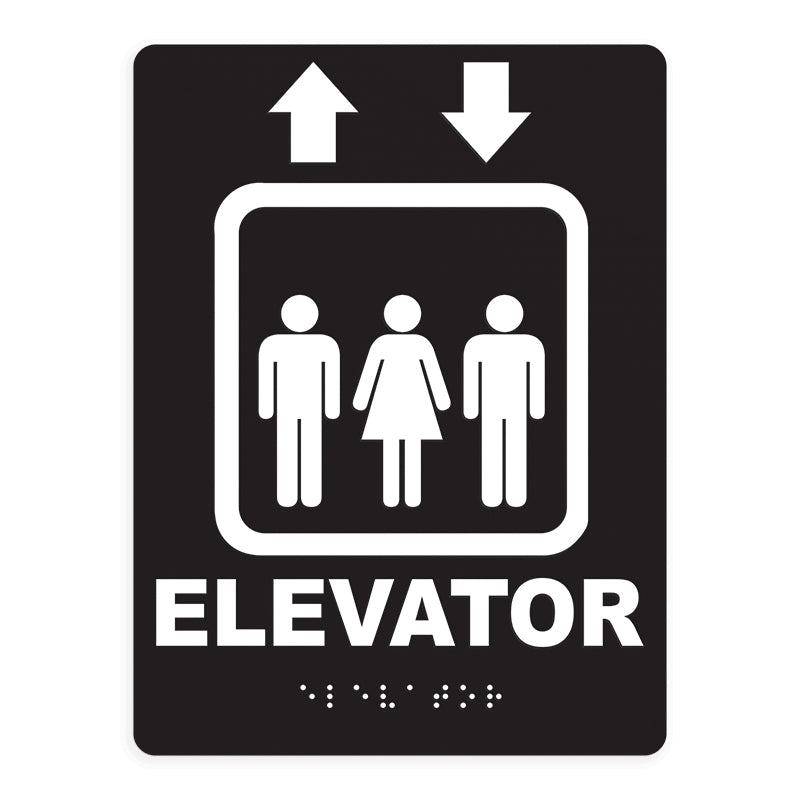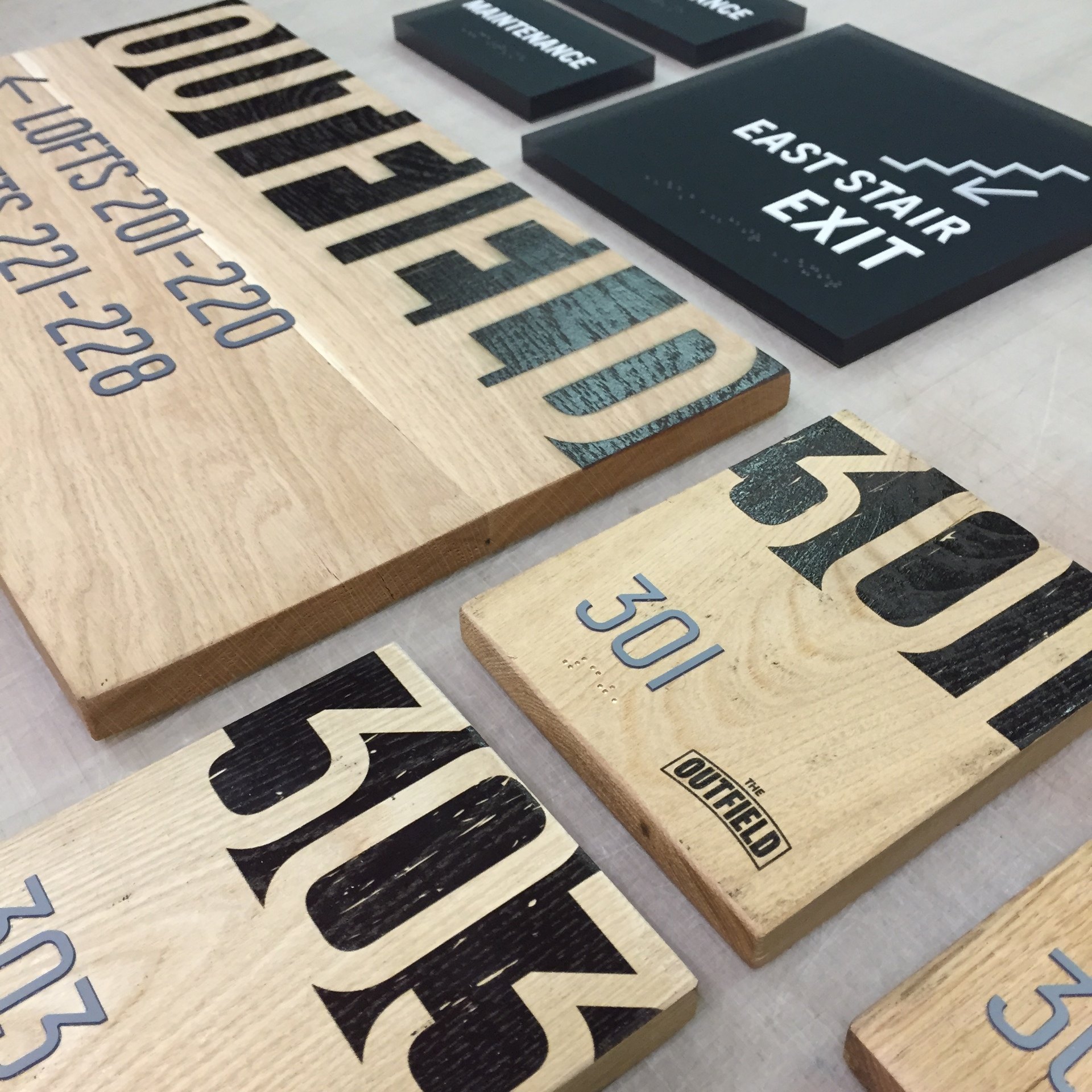Just How ADA Signs Enhance Accessibility for Everyone
Exploring the Key Attributes of ADA Indicators for Boosted Access
In the realm of ease of access, ADA indications serve as silent yet effective allies, making sure that rooms are accessible and comprehensive for individuals with handicaps. By incorporating Braille and responsive aspects, these signs break barriers for the visually impaired, while high-contrast shade systems and readable typefaces cater to diverse aesthetic requirements.
Value of ADA Compliance
Making certain conformity with the Americans with Disabilities Act (ADA) is important for cultivating inclusivity and equal access in public spaces and work environments. The ADA, passed in 1990, mandates that all public facilities, employers, and transportation solutions accommodate people with impairments, guaranteeing they enjoy the same rights and opportunities as others. Compliance with ADA standards not just fulfills legal commitments but additionally boosts an organization's credibility by demonstrating its dedication to diversity and inclusivity.
One of the crucial facets of ADA compliance is the implementation of obtainable signs. ADA indicators are developed to ensure that people with handicaps can quickly browse through spaces and structures. These signs should follow details guidelines regarding size, typeface, color contrast, and positioning to assure exposure and readability for all. Properly carried out ADA signage assists eliminate obstacles that people with handicaps usually run into, thereby promoting their self-reliance and confidence (ADA Signs).
In addition, sticking to ADA policies can mitigate the threat of lawful consequences and possible fines. Organizations that fail to comply with ADA standards might encounter lawsuits or fines, which can be both economically burdensome and damaging to their public image. Hence, ADA conformity is important to promoting a fair atmosphere for everyone.
Braille and Tactile Components
The consolidation of Braille and responsive aspects right into ADA signage personifies the principles of accessibility and inclusivity. These features are important for individuals who are blind or visually impaired, enabling them to browse public spaces with greater freedom and confidence. Braille, a responsive writing system, is crucial in giving created information in a layout that can be quickly perceived via touch. It is generally placed beneath the matching text on signs to make certain that individuals can access the details without aesthetic help.
Responsive elements expand beyond Braille and include increased personalities and symbols. These elements are designed to be noticeable by touch, permitting individuals to identify area numbers, toilets, exits, and various other essential locations. The ADA establishes particular guidelines pertaining to the dimension, spacing, and positioning of these responsive aspects to maximize readability and make sure consistency across various environments.

High-Contrast Color Design
High-contrast color design play a critical duty in boosting the exposure and readability of ADA signage for people with visual problems. These schemes are vital as they optimize the distinction in light reflectance in between message and history, guaranteeing that signs are easily noticeable, even from a distance. The Americans with Disabilities Act (ADA) mandates the usage of certain shade contrasts to accommodate those with restricted vision, making it an important element of compliance.
The efficacy of high-contrast colors hinges on their capability to stand apart in different illumination conditions, consisting of poorly lit environments and locations with glare. click here to find out more Normally, dark message on a light background or light message on a dark background is used to attain optimum contrast. Black message on a yellow or white background provides a stark aesthetic difference that aids in fast acknowledgment and understanding.

Legible Fonts and Text Size
When thinking about the style of ADA signage, the selection of understandable fonts and ideal message dimension can not be overemphasized. The Americans with Disabilities Act (ADA) mandates that fonts must be sans-serif and not italic, oblique, script, extremely ornamental, or of unusual form.
According to ADA standards, the minimum text height should be 5/8 inch, and it should boost proportionally with checking out range. Uniformity in message size adds to a cohesive visual experience, aiding individuals in browsing environments successfully.
Moreover, spacing between letters and lines is important to readability. Adequate spacing prevents personalities from appearing crowded, boosting readability. By sticking to these standards, designers can dramatically improve availability, guaranteeing that signage offers its desired function for all individuals, despite their aesthetic capacities.
Reliable Placement Strategies
Strategic positioning of ADA signage is necessary for optimizing ease of access and guaranteeing conformity with lawful standards. Correctly located signs direct people with specials needs efficiently, promoting navigation in public areas. Key factors to consider include visibility, closeness, and height. ADA standards specify that indicators need to be placed at an elevation between 48 to 60 inches from the ground to guarantee they are within the line of view for both standing and seated individuals. This conventional height range is essential for inclusivity, enabling mobility device users and people of varying elevations to gain access to details effortlessly.
Additionally, indications need to be put surrounding to the latch side of doors to permit very easy recognition before entry. Consistency in indicator placement throughout a center enhances predictability, decreasing confusion and enhancing overall customer experience.

Conclusion
ADA indicators play a crucial function in advertising accessibility by integrating functions that deal with the demands of people with disabilities. These elements collectively cultivate an dig this inclusive atmosphere, emphasizing the relevance of ADA compliance in ensuring equal gain access to for all.
In the world of accessibility, ADA signs serve as quiet yet effective allies, making sure that rooms are comprehensive and accessible for people with you can look here specials needs. The ADA, passed in 1990, mandates that all public facilities, employers, and transportation solutions fit individuals with specials needs, guaranteeing they appreciate the very same legal rights and opportunities as others. ADA Signs. ADA indicators are made to guarantee that individuals with impairments can quickly browse through rooms and buildings. ADA guidelines state that signs ought to be placed at a height between 48 to 60 inches from the ground to ensure they are within the line of view for both standing and seated individuals.ADA indicators play an important function in advertising availability by integrating features that address the needs of people with specials needs